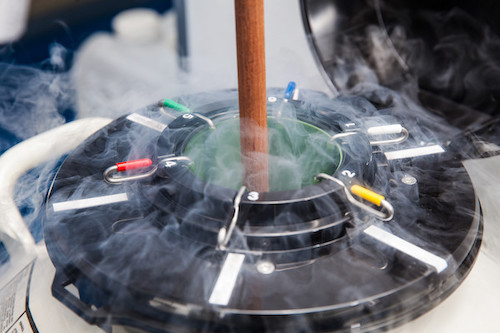Cryogenic Valves Buyers Guide

In 2021, the size of the worldwide cryogenic valve market was estimated at $3.65 billion. Cryogenic valves are employed in extremely cold situations, as their name suggests. Consequently, they are mostly considered to be helpful in businesses that operate with liquefied natural gas and compressed natural gas. A cryogenic valve is often made to respond to high pressure by being pushed into the open position, which enables the flow of gas or other media through the valve with little resistance.
Are you looking to purchase a cryogenic valve? Finding the right product is a difficult and overwhelming feat at times. Luckily, here, we’re sharing everything you need to know about purchasing the best cryogenic ball valves.
Types of Cryogenic Valves
The first we are going to mention is the cryogenic ball valve. This valve, as implied by its name, features a ball and a body made of polytetrafluoroethylene.
When compared to globe valves, they have improved flow properties. When a tight shut-off is required in several applications, they function superbly. But the ball valves are more likely to have wear around the ball and along the seals. They are typically chosen in situations where a free flow channel is necessary.
Cryogenic relief valves reduce the pressure to a preset value and safeguard against overpressurization. If the safety limitations are surpassed, the relief valves are smart enough to release the steam.
Cryogenic globe valves get their name from their spherical form and include an internal moving disk that spins at a 90-degree angle to the plane of their body seats.
These are excellent for long-term sealing performance and are highly complicated. They are not advised for usage when the flow rate is crucial since they might not be able to withstand moisture for very long.
A wedge-shaped gate that swings to shut in line with the mating body seat is present in cryogenic gate valves. Even with the valve completely open, they barely cause a pressure decrease. They have strong flow characteristics but are limited by wear and tear, much like ball valves.
Cryogenic butterfly valves have a circular disk at the center, which accounts for the shorter length of the butterfly valves. When prompt opening and shutting operations are necessary, they are frequently sued.
Butterfly valves use a circular disk in their center and are a member of the quarter turn family.
Compared to the alternatives discussed above, this disc enables butterfly cryogenic valves to be shorter in length, making them lighter and less expensive as well as quick and simple to operate. However, excessive usage reduces their lifespan.
Additionally, these are simpler to use, lighter, and cheaper.
How Do Cryogenic Valves Work?
To keep cryogenic gasses or other mediums safe and secure, cryogenic valves are maintained in a naturally closed condition. A cryogenic valve is often made to respond to high pressure by being pushed into the open position, which enables the flow of gas or other media through the valve with little resistance.
Until the pressure rises once again, the flow will remain open. Then, it will swing back and close using a specific metal seat bubble-tight shutdown to stop any leaks.
Other media, such as cryogenic gases, are particularly sensitive. Given that it is an expensive attempt to convert normal temperature gasses into cryogen, having it leak in an undesirable location might result in substantial and very pricey damages.
Standard valves are vulnerable to severe temperatures because they expand and contract at different rates in hot and cold environments, breaking the seal and allowing for unintended leakage. These heat gains have long been an issue in the handling of cryogenic gases during research, transportation, and storage.
Cryogenic media work best with five different types of cryogenic valves. Each of these kinds has a unique combination of qualities that make it appropriate for some purposes but inappropriate for others.
Due to its capacity to perform properly at pressures up to 750 psi and temperatures as low as -320 degrees, cryogenic valves stand out from other conventional valves on the market today.
How Much Do Cryogenic Valves Typically Cost?
Typically, you shouldn’t have to pay more than $900 for any type of valve. Of course, your price will depend on the size and type of equipment you purchase.
Smaller cryogenic valves will generally cost less than larger ones. Just as well, if you buy an automated valve you will be paying more.
This ball valve is an example of a reasonably-priced valve. You can shop around the rest of our collection to get a better idea of the price of cryogenic valves!
Cryogenic Manufacturers and Suppliers In the United States
There are several options when it comes to purchasing cryogenic valves in the U.S. We’re listing several of the top ones below:
- Anything Flows
- Circle Valve Technologies Inc.
- SVF Flow Controls.
- MAXPRO Technologies, Inc.
- DFT Inc.
- Erdmann Corp.
- Marcuse & Son, Inc.
- Dk-Lok U.S.A.
Anything Flows LLC is the best choice for shopping valves in the USA. They are a global leader in the distribution of valves, actuators, control valves, instruments, and measurement equipment. They also integrate solutions for engineering skids that are specifically developed for the energy and industrial sectors.
Buy Cryogenic Valves From Anything Flows Today
Whether you need a cryogenic ball valve or a cryogenic globe valve, Anything Flows has you covered. What kind of valve do you need for your next project?
For more resources on cryogenic equipment, check out this helpful page!
